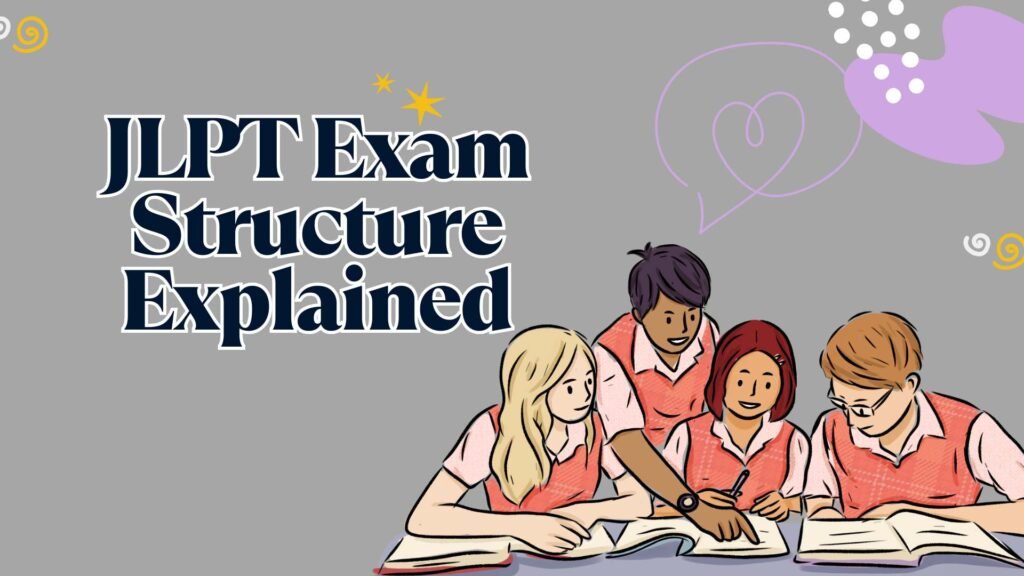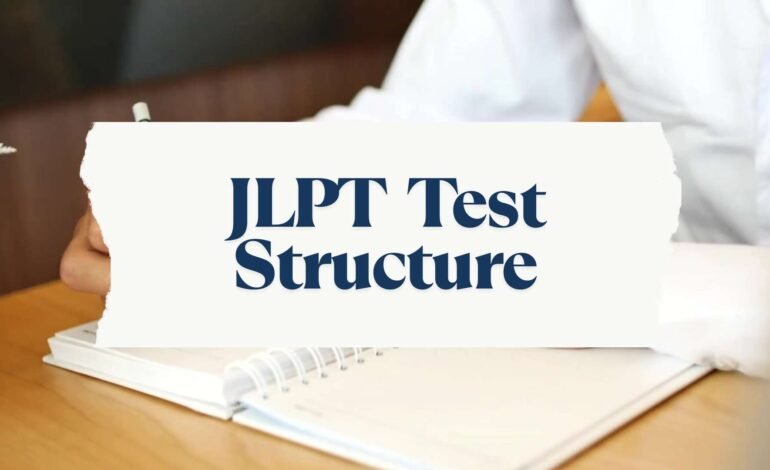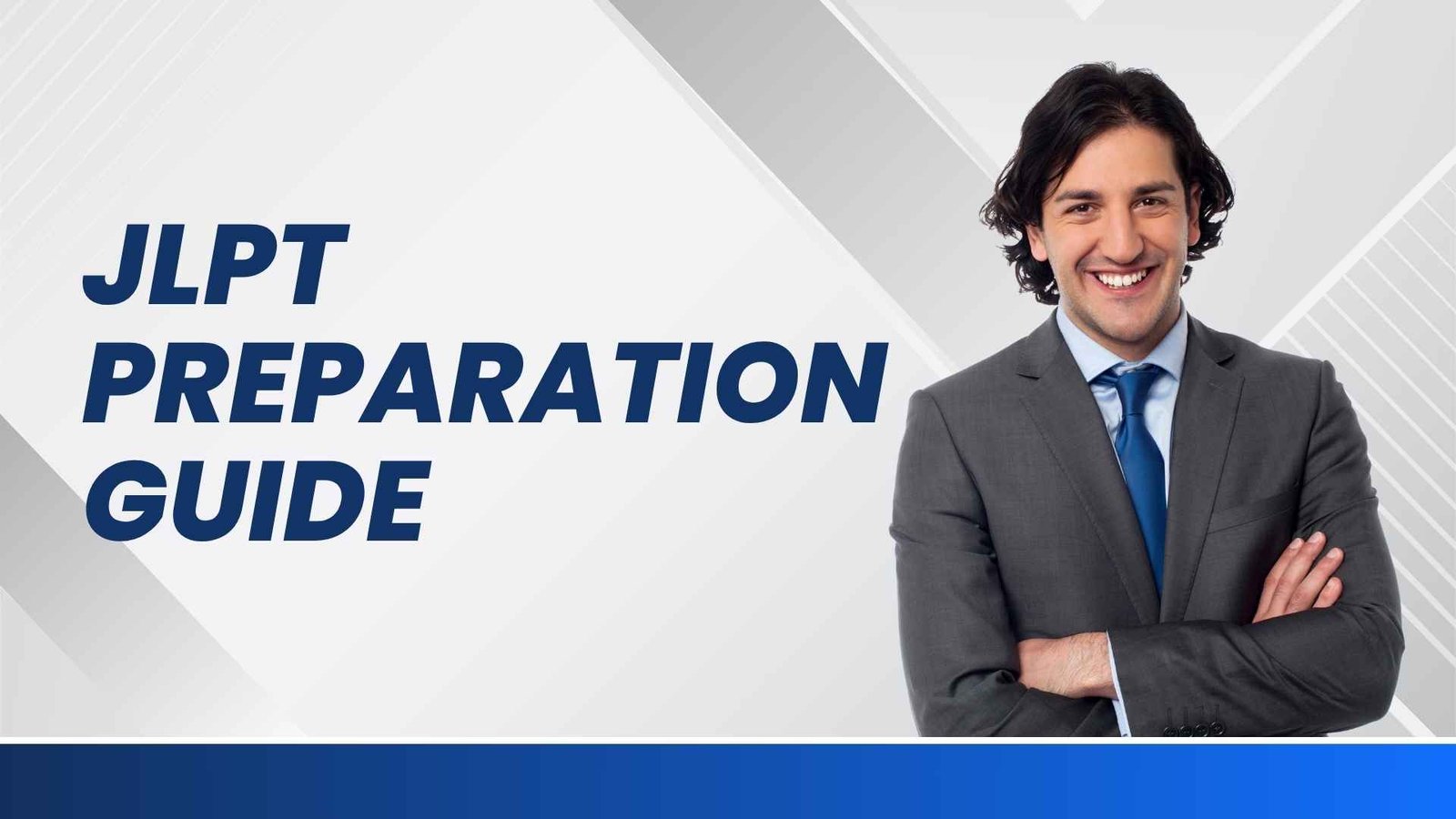The Japanese Language Proficiency Test (JLPT) is a globally recognized certification that measures the Japanese language skills of non-native speakers. Whether you’re preparing for study, work, or immigration purposes, understanding the JLPT exam structure is the first step to success.
The JLPT assesses your language proficiency across five levels — from N5 (basic) to N1 (advanced) — and evaluates three key skill areas: Grammar & Vocabulary, Reading, and Listening. In this article, we’ll break down the JLPT exam structure, explain what’s tested in each section, and offer tips on how to prepare effectively.
For precise details on grammar, vocabulary, reading, and listening sections, check the official JLPT Test Sections Guide.
Overview of the JLPT Exam Structure
The JLPT exam structure is divided into three major components:
- Language Knowledge (Grammar & Vocabulary)
- Reading Comprehension
- Listening Comprehension
At the N5 and N4 levels, the Language Knowledge and Reading sections are combined, while from N3 onwards, each component is tested and timed separately. The test is conducted in a multiple-choice format at all levels, and there are no speaking or writing sections.
Understanding the JLPT exam structure helps you focus your preparation on the specific skills required to pass each level.
Explore all our JLPT programs, resources, and support on the comprehensive TLS JLPT page.
1. Language Knowledge (Grammar & Vocabulary)
This section tests your ability to understand and apply correct grammar and vocabulary in real-life contexts.
- Grammar Questions: Fill-in-the-blank, sentence ordering, and usage selection
- Vocabulary Questions: Kanji readings, word meanings, usage in context, and correct spelling
Preparation Tip: Use JLPT-specific grammar guides like Shin Kanzen Master or TRY!, and SRS-based apps like Anki to retain vocabulary effectively.
The JLPT exam structure at this stage rewards accuracy and familiarity with how Japanese is naturally spoken and written.
Want a clear view of how the JLPT is organized? Explore the detailed JLPT Test Structure guide.

2. Reading Comprehension
The reading section evaluates your ability to understand written Japanese, including factual texts, opinions, and instructions.
- Question Types: Main idea, detail recognition, inference, sentence placement
- Passage Types: Notices, emails, articles, blog posts (N5–N4) to academic or editorial essays (N2–N1)
The JLPT exam structure for reading varies by level. While N5 focuses on simple, short texts, N1 includes dense and abstract content requiring deeper analysis.
Preparation Tip: Read NHK News Easy, short stories, or graded readers regularly. Focus on extracting the main point quickly.
To prepare effectively, check out our detailed breakdown of the JLPT Exam Pattern 2025—covering format, question types, and timing.
3. Listening Comprehension
Listening is a major component of the JLPT exam structure, and it can be the most challenging due to the speed and complexity of natural speech.
- Audio Types: Everyday conversations, instructions, phone calls, interviews, and monologues
- Question Types: Identify what was said, speaker intention, or the next appropriate action
From N5 to N1, the JLPT exam structure increases the length, speed, and complexity of the listening materials. N1 includes fast-paced dialogues with subtle context clues.
Preparation Tip: Use JLPT listening CDs, YouTube videos, and Japanese podcasts. Repeat audio with transcripts for deeper comprehension.
Curious about the detailed breakdown of the JLPT? Visit our comprehensive JLPT Format Explained guide.
JLPT Exam Structure by Level
The JLPT exam structure evolves in complexity as you move from N5 to N1. Higher levels require deeper comprehension, broader vocabulary, and the ability to understand fast-paced spoken Japanese.
| Level | Sections Included | Total Time |
| N5 | Language Knowledge + Reading, Listening | ~90 minutes |
| N4 | Language Knowledge + Reading, Listening | ~105 minutes |
| N3 | Language Knowledge, Reading, Listening | ~140 minutes |
| N2 | Language Knowledge, Reading, Listening | ~155 minutes |
| N1 | Language Knowledge, Reading, Listening | ~170 minutes |
As you progress to higher levels, the JLPT exam structure introduces:
- More advanced grammar patterns
- A larger pool of kanji and vocabulary
- Longer reading passages with abstract or academic content
- Native-level listening tasks that require quick interpretation and contextual understanding
Tip: Start preparing early for upper-level exams (N2 and N1), as they demand consistent exposure to real-world Japanese materials and test-like practice sessions.
Want a clear overview of how the JLPT is organized? Check out our detailed JLPT Exam Structure guide.
How to Prepare According to the JLPT Exam Structure
Success in the JLPT depends not only on how much you study but also on how well your preparation aligns with the actual JLPT exam structure. Here are four proven strategies to help you prepare smartly and effectively:
Master Grammar & Vocabulary
The Language Knowledge section focuses on your understanding of grammar patterns, particles, and vocabulary usage.
- Prioritize high-frequency words and grammar structures based on your JLPT level
- Use JLPT-focused books and SRS apps like Anki to memorize kanji and vocabulary
- Practice grammar in context, not just as isolated rules
Why it matters: This directly targets the grammar and vocabulary section of the JLPT exam structure, which forms the foundation of the test.
Need clarity on how the JLPT is structured? Check out our detailed JLPT Exam Format guide for a full section-by-section breakdown.
Build Reading Speed
Reading comprehension gets progressively harder from N5 to N1. The key is not just reading but reading efficiently.
- Time your reading exercises to mimic actual exam pacing
- Highlight key phrases and summarize each paragraph in your own words
- Use practice passages from official JLPT materials and online reading platforms
Why it matters: Timed reading trains your brain to process Japanese text under pressure — a must for succeeding in the JLPT exam structure.
Practice Listening Daily
Listening can be the toughest part, especially at higher levels, due to the speed and lack of repetition.
- Spend 10–15 minutes daily listening to native-level audio (news, dramas, podcasts)
- Use transcripts to match spoken and written Japanese
- Try shadowing (repeat after the speaker) to improve fluency and comprehension
Why it matters: The listening section in the JLPT exam structure requires sharp ears and fast response. Consistency builds results.
Need a full breakdown of the exam’s layout and question types? Visit our detailed JLPT Test Format guide.
Take Full-Length Mock Tests
Simulating the exam environment prepares you mentally and physically for the test day.
- Take full-length mock tests regularly, following real JLPT exam structure and timing
- Analyze your mistakes and focus revision on weak areas
- Use official sample papers and trusted prep books like Shin Kanzen Master
Why it matters: Familiarity with the JLPT exam structure boosts confidence and helps you manage time effectively across all sections.
Everything you need for the upcoming test—timelines, strategies, and tips—is covered in our comprehensive JLPT 2025 Guide.
FAQs on JLPT Exam Structure
Q1. What sections are included in the JLPT exam?
A: The JLPT includes three sections: Language Knowledge (Grammar & Vocabulary), Reading, and Listening.
Q2. Is the JLPT exam structure the same for all levels?
A: The structure is similar, but complexity, length, and time increase significantly from N5 to N1.
Q3. Does the JLPT include writing or speaking?
A: No. The JLPT exam structure only includes reading and listening comprehension, along with grammar and vocabulary multiple-choice questions.
Q4. Which section is the most difficult?
A: Many students find listening the hardest, especially at higher levels, due to speed and contextual nuance.
Q5. Can I pass JLPT without coaching?
A: Yes, if you study smart using resources aligned with the JLPT exam structure, such as past papers, apps, and official guides.
Want to sharpen your comprehension skills? Learn expert techniques in the JLPT Reading & Listening Sections guide.
Final Thoughts
Understanding the JLPT exam structure is essential for effective and focused preparation. Each section—Grammar & Vocabulary, Reading, and Listening—requires a specific approach. As you go up the levels, the exam gets longer and more challenging, but with the right strategy, passing is absolutely achievable.
Make sure your study plan mirrors the actual structure of the test, practice under exam-like conditions, and keep your preparation consistent. Master the format—and the language fluency will follow.






